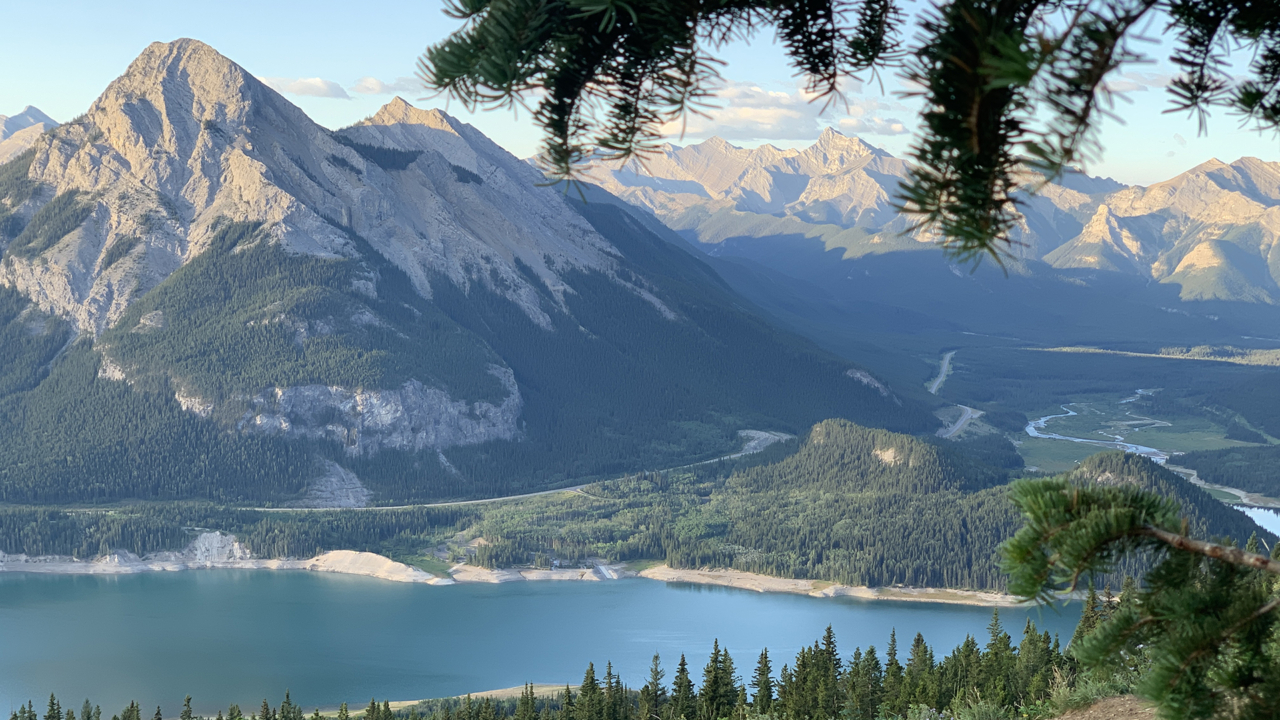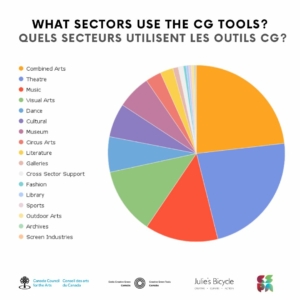- Posted on September 5th, 2024
Canada Creative Green Tools – Adapting and Learning from Diverse Communities

An interview with Devon Hardy

Over the years, JB has worked in partnership with organisations and networks to offer paid consultancy, guidance and support to international organisations looking to develop their own tools, using and sharing the learnings gained from our years of experience working in footprint calculation and strategic environmental action.
One of these partnerships has been with the Centre for Sustainable Practice in the Arts (CSPA) and the Conseil québécois des événements écoresponsables (CQEER) who began adapting JB’s CC Tools to the Canadian context, launching it Canada-wide on April 22, 2022.
We talked to Devon Hardy from CSPA to find out about how she and her team and collaborators took on this challenge.
What were your aims and objectives with creating the first Canadian Creative Green Tools?
The level of environmental engagement in the UK cultural sector is incredible, and I believe that has a lot to do with Julie’s Bicycle’s hard work over years. We wanted to emulate this, as well as the emission reduction potential of JB’s tools, but in a way that worked for the unique Canadian context and was inclusive and culturally appropriate.
What is different about Canada that required the tools to be adapted?
So many things! The first and most obvious is that Canada is huge, and every province and territory has its own unique energy mix, some of which are up to 500 times more carbon intensive than others. Canada’s size and dependence on cars also affects the ways in which we travel, which needed to be considered in the Tools from a user perspective as well. Finally, the cultural context is very different. As a country with two official languages, we had to ensure that everything was available in both English and French. As Canadians, it is also crucial to come to terms with our history of genocide and ensure that Indigenous voices are always included. This is especially important in the environmental movement as Indigenous peoples have such regenerative relationships with the land from which we can learn a lot.
How did you work with the arts and culture organisations alongside Indigenous communities to make sure the tools were useful and practical?
We made a point of including Indigenous voices from the very beginning of this process. About 20% of the people we consulted with in our first year of research and consultation were either Indigenous artists or arts professionals, and from these discussions we learned that we needed to go deeper into several topics, including language, data sovereignty and traditional knowledge. We began working with a couple of different Indigenous-led consulting companies in our second year of adapting the Tools, including Naheyawin, with whom we continue to have an ongoing relationship to this day.

What were some of the challenges with adapting the tools?
It’s always a challenge condensing a huge amount of information into a concise format. In this case, deciding which changes to prioritise was challenging when we had feedback from so many different sources and a limited budget.
What were your key learnings and takeaways?
First, diverse voices make everything better! By including many different voices in the adaptation process – including those representing different subsectors, regions, and organisation types, as well as historically marginalised communities – we believe we achieved a much better outcome; one that better represented the country as a whole.
Second, always leave more time than you think you will need! Consultation processes, testing and web development all take time, so leave extra time in the project schedule (and have contingency funds as well!).
What are your next steps?
We are going to continue improving upon the Tools and listening to the sector. Continuous improvement is key to our core values of the program. New information is constantly becoming available, and we will never stop learning or responding to the changing needs of our community.
We are also going to continue expanding our framework beyond the CG Tools. Carbon footprinting is an essential first step to climate action for many of our users, but they will eventually need to go further. We want to support them in that process by advising on best practices for emissions reduction, offering opportunities for knowledge sharing, fostering greater resilience through climate adaptation, etc. This should also include establishing a framework for setting and meeting collective emissions reduction targets across the sector.
“The adaptation of our Creative Climate Tools to the Canadian context has been a profound journey of collaboration and learning. By partnering with diverse voices, particularly Indigenous communities, we have ensured that the tools are not only environmentally impactful but also culturally and regionally relevant. Together, we are building a resilient future, one that honours our collective efforts in a global community.”
– Paul Griffiths, Digital Lead at Julie’s Bicycle
Find out more about the Creative Green Tools Canada
Check out our Tools and Learning page.

